Used Sabre 2 170 Canopy
€800.00
Excellent Condition – Inspected, Maintained, and Ready to Fly
When purchasing a Used Sabre 2 170 Canopy, the condition matters just as much as performance. That’s why this canopy has been meticulously inspected, tested, and verified by professional riggers to ensure it meets the highest safety and flight-readiness standards. Every cell, line, and seam has been carefully examined to confirm that the canopy remains in excellent, near-new condition.
Rigorous Inspection Standards
Before being listed, this canopy underwent a complete multi-point inspection that included both visual and tactile assessments. Each part of the canopy was evaluated to guarantee structural integrity, material strength, and consistent inflation patterns during deployment.
Inspection Highlights
-
Fabric Integrity: No tears, pinholes, or frayed stitching.
-
Line Condition: All lines checked for even tension, smooth feel, and accurate length.
-
Slider and Rings: Inspected for smooth operation and durability.
-
Seams and Attachments: Reinforced stitching confirmed to be intact and tight.
-
Color Retention: Canopy fabric retains vibrant, uniform tone without sun fade.
DOM: 09/2010
400 Jumps
Description
Used Sabre 2 170 Canopy – Premium Skydiving Experience
When it comes to high-performance skydiving canopies, the Used Sabre 2 170 Canopy stands out for reliability, precision, and versatility. Whether you are a seasoned jumper or progressing in your skydiving journey, this canopy provides exceptional handling, responsive turns, and superior stability in varying flight conditions. Designed to balance agility and safety, the Sabre 2 170 has earned its reputation among both recreational and professional skydivers.
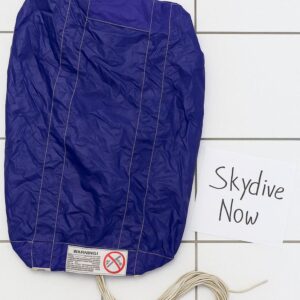



Key Features at a Glance
-
Model: Sabre 2 170
-
Condition: Used, fully inspected and certified for safe operation
-
Canopy Type: Rectangular / High-performance ram-air
-
Material: Durable, high-tenacity nylon
-
Wing Loading Range: Suitable for intermediate to advanced jumpers
-
Deployment: Smooth, predictable, and consistent
-
Steering & Handling: Responsive toggles with precise maneuverability
-
Pack Volume: Compact, easy to store in standard gear bags
Overview of the Sabre 2 170 Canopy
The Sabre 2 170 is designed to provide a perfect combination of performance and control. Jumpers often seek a canopy that offers both agility for dynamic maneuvers and stability for safer landings. This canopy meets those requirements through its advanced airfoil design, reinforced seams, and high-quality materials. The canopy’s dimensions and aspect ratio ensure optimal glide performance, while its line configuration guarantees consistent openings across a wide range of exit weights.
Design and Materials
Constructed from high-tenacity nylon, the Sabre 2 170 canopy ensures durability, longevity, and resistance to the wear-and-tear of repeated jumps. Reinforced leading edges maintain shape under high load, while precisely calibrated cells allow smooth airflow and responsive handling. The materials are lightweight yet strong, ensuring that pack volume remains manageable without compromising performance. Additionally, the canopy’s stitching and line attachments undergo rigorous quality checks, assuring jumpers of consistent, reliable performance.
Highlight Design Features:
-
High-tenacity nylon: Strong yet lightweight for better packability
-
Reinforced leading edges: Maintains canopy shape under load
-
Precision stitching: Ensures consistent cell inflation and stability
-
Optimized line layout: Enhances control and reduces oscillation
-
Compact pack volume: Ideal for travel and storage
Used Sabre 2 170 Canopy Performance and Handling
Performance is where the Sabre 2 170 truly excels. Its design allows for predictable handling in both calm and turbulent conditions. The canopy responds accurately to toggle inputs, making steep turns, flares, and advanced maneuvers achievable with confidence. Its glide ratio ensures efficient forward travel without sacrificing safety margins.
-
Responsive steering: Precise toggle response for advanced turns
-
Stable descent: Minimal oscillation for controlled landings
-
Efficient glide: Covers horizontal distance efficiently during flight
-
Consistent openings: Reliable deployment across exit weights
Used Sabre 2 170 Canopy Safety Considerations
The Sabre 2 170 is engineered with jumper safety as a top priority. Its predictable behavior during deployment reduces the risk of line twists, malfunctions, or unexpected oscillations. Regular inspection and maintenance, especially on used canopies, ensure ongoing safety. The canopy’s construction and materials meet industry standards for load tolerance and resilience.
Used Sabre 2 170 Canopy Safety Highlights:
-
Certified for safe operation
-
Predictable deployment reduces incident risk
-
Durable materials withstand multiple jumps
-
Line and cell integrity checked before every pack
Canopy Tuning and Adjustments for the Used Sabre 2 170
Optimizing Performance Through Fine-Tuning
Every canopy, especially a high-performance model like the Used Sabre 2 170 Canopy, delivers its best results when tuned precisely to your body weight, experience level, and flying preferences. Although factory settings are designed to offer balanced performance, seasoned jumpers know that slight adjustments can transform flight dynamics dramatically. By calibrating line lengths, brake tension, and riser symmetry, you can elevate your skydiving experience to professional-grade control and efficiency.
Understanding Line Trim and Its Impact
One of the most important aspects of canopy tuning is line trim. Over time, suspension lines can stretch or shrink depending on material type and jump frequency. Even a few millimeters of deviation can alter opening characteristics, pitch stability, and glide efficiency. Therefore, frequent trim inspections ensure consistent handling.
When the Sabre 2 170 canopy is correctly trimmed, it delivers a more predictable pitch, cleaner inflations, and uniform cell pressurization. A small line adjustment can mean the difference between a smooth, progressive flare and an abrupt stall.
Recommended Tuning Practices:
-
Measure line lengths after every 50–100 jumps.
-
Compare with manufacturer’s specs to identify deviations.
-
Replace worn or stretched lines immediately to maintain symmetry.
-
Ensure brake lines have sufficient travel before full stall.
Each of these steps helps maintain the canopy’s performance integrity and safety margins.
Brake Line Calibration for Precision Handling
Brake line tension directly affects how your canopy responds during flares and turns. A perfectly calibrated brake line allows a smooth transition between full flight, deep brakes, and stall points. If the brakes are set too tight, the canopy may exhibit constant drag or premature stall tendencies. Conversely, if they’re too loose, your flare power diminishes, making landings less efficient.
The Sabre 2 170’s control range offers exceptional flexibility, allowing you to fine-tune brake inputs according to your body weight and flight style. A few centimeters of adjustment can sharpen responsiveness or smooth out aggressive turns.
Brake Line Optimization Tips:
-
Check brake length before every jump season.
-
Shorten lines slightly for quicker toggle response.
-
Lengthen them for smoother flight and softer flare transitions.
-
Use symmetrical adjustments to prevent uneven turns.
Proper calibration not only enhances flight control but also improves overall canopy longevity by minimizing stress on attachment points.
Riser and Toggle Sensitivity
The Sabre 2 170 responds distinctly to riser inputs. Front risers increase dive angle and speed, while rear risers help extend glide or manage final approach precision. Adjusting riser lengths allows you to personalize the flight envelope without compromising balance.
Toggle input sensitivity varies with riser configuration. A slightly longer riser setup softens turn initiation, while shorter risers deliver sharper roll rates. These adjustments give you the power to fine-tune how the canopy behaves during every stage of descent.
Advanced Adjustment Techniques:
-
Front risers: Used for speed dives and swoop training.
-
Rear risers: Useful for long glides and flare extensions.
-
Toggle pressure: Can be modified for smoother feedback.
-
Harness input: Influences roll dynamics without toggles.
Through deliberate practice and incremental tuning, jumpers can craft a flying style that feels perfectly intuitive.
Controlling Glide Ratio and Descent Rate
The Used Sabre 2 170 Canopy excels in offering a versatile glide range suitable for varied landing patterns and wind conditions. Pilots can use body position, riser input, and toggle modulation to adjust descent characteristics.
When trimmed for a flatter glide, the canopy covers impressive horizontal distance — perfect for navigating large drop zones or returning from long spots. Conversely, adjusting to a steeper glide is ideal for precision landings in tighter areas.
Practical Glide Control Methods:
-
Use body pitch adjustments to influence canopy angle.
-
Engage rear risers to flatten the glide path.
-
Apply small brake inputs to reduce descent rate during approach.
-
Transition smoothly from full flight to flare to preserve energy for soft landings.
With proper training, even intermediate jumpers can achieve advanced glide management comparable to competition-level performance.
The Role of Wing Loading in Tuning
Wing loading — the ratio between your exit weight and canopy area — plays a decisive role in how the Sabre 2 170 behaves in flight. A lighter wing loading enhances stability and forgiveness, while a higher ratio delivers faster response and dynamic handling.
The Sabre 2 170 performs optimally across a moderate-to-high loading range, providing both recreational enjoyment and professional precision. Adjustments to riser length, brake setting, and packing style should always consider your personal wing loading for consistent performance.
Example Wing Loading Effects:
-
Low loading (0.9–1.0 lb/sq ft): Gentle handling and longer glide.
-
Moderate loading (1.1–1.3 lb/sq ft): Balanced speed and control.
-
High loading (1.4+ lb/sq ft): Aggressive responsiveness and shorter recovery arc.
Maintaining appropriate wing loading ensures the canopy’s designed flight envelope remains stable and predictable.
Packing Technique and Its Influence
How you pack your canopy significantly influences deployment reliability. The Used Sabre 2 170 rewards careful, consistent packing techniques. Incorrect stowing or uneven fabric folding can lead to line twists or inconsistent openings.
A systematic packing routine preserves canopy symmetry and minimizes wear on stress points. Always ensure the slider is positioned correctly, and lines are stowed evenly in rubber bands of equal tension.
Pro Packing Guidelines:
-
Inspect fabric before every pack cycle.
-
Stow lines evenly to maintain symmetrical inflation.
-
Center the slider to prevent off-heading openings.
-
Avoid tight folds that can restrict inflation airflow.
-
Use a packing mat to protect fabric from abrasion.
Over time, refined packing habits not only improve deployment consistency but also extend the canopy’s lifespan.
Flight Practice and Adaptation
Each used canopy has a unique flight signature shaped by its previous usage and maintenance history. Therefore, spending time in progressive flight drills helps you adapt quickly to your Used Sabre 2 170 Canopy. Start with gentle turns, observe response timings, and gradually integrate advanced maneuvers such as double fronts, harness carving, and dynamic flares.
Consistency builds familiarity, and familiarity builds confidence. As your canopy reacts predictably to each input, your landings become smoother, your approaches more precise, and your overall enjoyment of flight more rewarding.
Used Sabre 2 170 Canopy Recommended Flight Training Drills:
-
Altitude-based turns to test roll responsiveness.
-
Slow-flight exercises to understand stall points.
-
Front riser dives for descent control practice.
-
Rear riser flares for emergency landing training.
Each exercise enhances control and deepens your understanding of canopy dynamics, transforming your experience from simple descent to precision flight mastery.Used Sabre 2 170 Canopy
Maximizing Longevity of a Used Canopy
A well-cared-for Used Sabre 2 170 can deliver hundreds of reliable jumps if maintained properly. Routine inspection, timely repairs, and careful packing are crucial. Storing your canopy in a cool, dry environment prevents UV damage and fabric degradation. Periodic porosity testing ensures the material remains airtight for consistent pressurization.
Using protective gear bags, avoiding direct sunlight exposure, and cleaning gently after sandy or humid jumps contribute to extended durability. The canopy’s robust construction rewards proper care with long-term dependability and sustained performance.Used Sabre 2 170 Canopy
When properly maintained, even a pre-owned Sabre 2 170 performs nearly indistinguishably from a new one.
Landing Techniques and Safety Practices for the Used Sabre 2 170 Canopy
Mastering Precision Landings with Confidence
Landing safely and gracefully is one of the most rewarding moments of any skydive. The Used Sabre 2 170 Canopy offers pilots a forgiving yet responsive platform to refine their approach, timing, and flare technique. Whether you’re returning to the drop zone after a long spot or setting up for a competition-style accuracy landing, this canopy’s design gives you full control over every phase of descent.
Each landing presents a new opportunity to practice consistency. The key lies in understanding how your canopy reacts to inputs at varying airspeeds, altitudes, and wind conditions. Because the Sabre 2 170 canopy balances predictable behavior with agile responsiveness, it allows you to perfect landings progressively — jump after jump.
Approach Planning and Setup
Before any successful landing comes a well-planned approach. Skydivers using the Sabre 2 170 benefit from developing structured landing patterns that include downwind, base, and final legs. Establishing visual reference points helps maintain consistent altitude awareness while aligning your canopy with the wind direction.
By integrating altitude checks and speed control early in the approach, pilots ensure smoother transitions into the flare phase. The canopy’s stable glide performance gives ample time to correct for wind drift or pattern congestion without inducing sudden or aggressive maneuvers.
Key Approach Guidelines:
-
Plan your pattern early before turning onto the base leg.
-
Use consistent visual markers for altitude reference.
-
Monitor air traffic during your approach to ensure clear final entry.
-
Stay aware of wind shifts and adjust your final heading accordingly.
-
Avoid last-second turns below 100 feet for optimal safety.
A disciplined approach not only improves accuracy but also fosters calm, controlled landings — hallmarks of skilled canopy piloting.
Understanding Wind Management
Wind conditions are the defining factor in how your canopy behaves near the ground. The Used Sabre 2 170 Canopy reacts dynamically to both headwinds and crosswinds, maintaining its integrity and smooth glide under varying velocities. By learning to manage wind gradients and ground effect, you can maintain consistent landings across different environments.
Headwinds provide natural lift, allowing for slower ground speed and more forgiving landings. Crosswinds, however, demand precise heading corrections to maintain alignment. The canopy’s excellent roll response helps pilots counter drift effectively without excessive toggle input.Used Sabre 2 170 Canopy
Used Sabre 2 170 Canopy Effective Wind Handling Techniques:
-
Face into the wind during your final approach for maximum lift.
-
Use gentle toggle corrections to manage drift in crosswinds.
-
Avoid oversteering when adjusting for changing wind layers.
-
Maintain smooth body alignment to minimize drag.
-
Rely on risers instead of toggles when minor corrections are needed.
Every flight under the Sabre 2 170 teaches subtle lessons in reading air currents and adjusting instinctively for stability.
Used Sabre 2 170 Canopy The Flare: Timing, Power, and Precision
Executing the perfect flare is both an art and a science. The Used Sabre 2 170 provides a generous control range, enabling jumpers to modulate flare power smoothly from full glide to soft touchdown. Successful flare timing depends on airspeed, descent rate, and canopy pitch — all of which respond proportionally to your toggle input.
Starting your flare slightly too early may cause the canopy to lose lift before you reach the ground. Starting too late, on the other hand, results in a faster touchdown. The goal is a controlled, progressive pull that converts forward speed into lift, allowing for a gentle, balanced landing.Used Sabre 2 170 Canopy
Flare Optimization Tips:
-
Begin the flare when your feet are approximately 8–10 feet above ground.
-
Pull toggles progressively — not abruptly — to preserve lift.
-
Keep shoulders level to avoid directional drift.
-
Use full extension at the end of the flare for maximum braking effect.
-
Follow through naturally as your feet make contact with the ground.
Through consistent practice, pilots develop a natural rhythm that leads to effortless, soft landings every time.
Advanced Landing Techniques
Once you’ve mastered standard approaches and flares, the Sabre 2 170 Canopy invites exploration into advanced landing techniques. These maneuvers, such as carving approaches, braked turns, and swoop landings, demand precision and a strong understanding of canopy dynamics. However, when executed correctly, they highlight the true performance potential of this canopy.
High-performance swoops, for instance, showcase the canopy’s ability to carry energy forward through a dive transition into a powerful, level glide. These maneuvers require altitude awareness, refined control, and progressive learning under professional supervision.
Popular Advanced Techniques:
-
Carving approaches for energy retention and visual alignment.
-
Double front riser dives to build speed for extended flare.
-
Braked approaches to control descent in tight landing zones.
-
Harness carving to reduce toggle reliance during setup.
-
Swoop landings (only for experienced canopy pilots).
Each technique expands your capabilities while revealing how responsive and precise the Sabre 2 170 truly is.
Safety Practices for Used Canopies
Safety remains the cornerstone of every jump, especially when operating a used canopy. The Used Sabre 2 170 undergoes meticulous inspections to ensure its airworthiness. However, pilots must remain proactive in assessing canopy health before each flight. Visual inspection, line check, and slider verification are vital pre-jump routines that prevent in-flight complications.
Furthermore, weather awareness, pattern discipline, and altitude management significantly reduce incident risks. Respecting safe altitude thresholds for maneuvers and avoiding low turns preserves both canopy integrity and pilot safety.
Core Safety Principles:
-
Inspect lines and fabric before each jump.
-
Check deployment bag stow condition to prevent line snags.
-
Avoid radical maneuvers below 200 feet.
-
Monitor altitude consistently with audible and visual altimeters.
-
Communicate intentions clearly during group or formation jumps.
By incorporating these habits into every skydive, you enhance both personal safety and group harmony in shared airspace.
Emergency Landing Procedures
Even with the reliability of a Used Sabre 2 170 Canopy, situational awareness remains essential. Unexpected wind shifts, turbulence, or misjudged patterns can occasionally require emergency landings. In such scenarios, prioritizing landing area selection and canopy control minimizes risk.
The Sabre 2’s stability and predictable response allow for emergency adjustments, whether landing in crosswind fields, restricted zones, or uneven terrain. The key lies in maintaining composure, conserving airspeed, and executing a controlled flare within available space.
Emergency Response Checklist:
-
Stay calm and focused throughout the descent.
-
Identify alternative landing zones early if pattern deviation occurs.
-
Maintain canopy control — never sacrifice heading for speed.
-
Flare evenly even in rough or crosswind conditions.
-
Perform a PLF (Parachute Landing Fall) when landing on uneven ground.
Training for these contingencies not only enhances your skill but also ensures confidence in any flight environment.
Progressive Skill Building Under the Sabre 2 170
The beauty of the Sabre 2 170 Canopy lies in its ability to support steady skill progression. Beginners transitioning from larger student canopies find its responsiveness motivating rather than intimidating. Intermediate jumpers appreciate its balance of forgiveness and performance, while advanced pilots use it as a platform for fine-tuning high-performance flight.
Each stage of mastery reveals new nuances in control, flight path shaping, and energy management. By pairing consistent practice with mentorship, jumpers continue evolving toward precision piloting excellence.
Skill Development Milestones:
-
Stage 1: Confidence in smooth landings and predictable flares.
-
Stage 2: Mastery of consistent approaches and wind corrections.
-
Stage 3: Introduction to riser and harness inputs.
-
Stage 4: Intermediate swoop and carving transitions.
-
Stage 5: Advanced canopy piloting and accuracy competition readiness.
This structured growth path makes the Sabre 2 170 not just a canopy — but a teaching companion throughout your skydiving evolution.
Building a Safer Skydiving Community
Every pilot flying the Used Sabre 2 170 Canopy contributes to a culture of responsibility, awareness, and shared learning. Skydiving thrives on mutual respect — both in the air and on the ground. Promoting canopy education, mentoring newcomers, and maintaining rigorous safety practices ensures everyone enjoys the freedom of flight without compromise.
By choosing a reliable, pre-owned canopy like the Sabre 2 170, you join a network of pilots dedicated to excellence, precision, and safety in every jump.
Community Safety Contributions:
-
Participate in canopy courses and refreshers regularly.
-
Share experience with newer jumpers to improve group awareness.
-
Promote gear inspection discipline across your drop zone.
-
Support safety briefings and incident prevention initiatives.
-
Celebrate controlled, skillful landings as achievements of progress.
Maintenance, Care, and Longevity of the Used Sabre 2 170 Canopy
Ensuring Peak Performance Through Proper Maintenance
A well-maintained canopy performs reliably, feels predictable, and remains safe throughout hundreds of jumps. The Used Sabre 2 170 Canopy is no exception. Even though it’s pre-owned, its robust materials, reinforced stitching, and superior design enable long-term use — provided you commit to consistent inspection and maintenance routines.
Every jump introduces small variables: humidity, UV exposure, sand, and line tension shifts. While individually minor, these accumulate over time. By integrating a disciplined maintenance plan into your skydiving routine, you protect both your gear investment and your safety in the sky.
Daily Inspection Checklist Before Every Jump
Before each pack job, dedicating a few minutes to inspection pays dividends. This practice not only prevents deployment issues but also familiarizes you with subtle canopy changes. A quick yet detailed visual and tactile check ensures that you catch early signs of wear, preserving flight integrity.
Pre-Jump Inspection Essentials:
-
Inspect lines carefully for fraying, knots, or inconsistencies.
-
Check stitching along ribs, seams, and leading edges.
-
Examine fabric integrity for small tears or UV weakening.
-
Confirm slider placement and ensure grommets slide freely.
-
Verify brake settings for symmetry and consistent tension.
-
Look over risers and links for distortion or corrosion.
-
Check pilot chute condition and bridle attachment security.
Consistency builds familiarity. Familiarity builds trust. That trust ultimately transforms into confident performance during every descent.
Periodic Professional Maintenance
Even the most vigilant self-inspection cannot replace the precision of professional evaluation. A certified rigger possesses both the tools and expertise to measure trim accuracy, test porosity, and identify hidden weaknesses that ordinary visual checks might overlook.
The Used Sabre 2 170 benefits greatly from routine professional maintenance at specific intervals — ideally every 100 to 150 jumps, depending on environmental conditions. This schedule ensures the canopy continues to deploy symmetrically and perform consistently.
Professional Service Recommendations:
-
Comprehensive line trim inspection every 100 jumps.
-
Fabric porosity testing annually or after exposure to moisture.
-
Full reline service every 300–500 jumps, depending on wear.
-
Canopy patching or seam repair by certified riggers only.
-
Structural inspection after any hard opening or high-G maneuver.
By staying proactive, jumpers prevent small issues from escalating into major repairs or safety hazards.
Cleaning and Fabric Preservation
Keeping the canopy clean extends both its appearance and structural life. Dirt, salt, and fine dust particles can embed in the fabric, slowly degrading fibers and altering airflow properties. The Used Sabre 2 170 is constructed from high-tenacity nylon, a material designed to resist wear — but it still benefits immensely from proper care.
Cleaning Protocol:
-
Use only cold water and a mild detergent formulated for synthetics.
-
Avoid abrasive brushes or harsh scrubbing that damages fibers.
-
Rinse thoroughly to eliminate any soap residue.
-
Air-dry naturally away from direct sunlight or heat sources.
-
Never machine wash or tumble dry.
These simple habits maintain canopy integrity while preserving vibrant fabric color and tactile smoothness.
Storage Best Practices
The way you store your canopy directly influences its longevity. Environmental factors such as humidity, temperature, and UV exposure can gradually weaken materials. Proper storage ensures your Used Sabre 2 170 Canopy retains its elasticity, porosity, and shape over years of use.
Ideal Storage Conditions:
-
Cool, dry environment: Prevents mildew and moisture buildup.
-
UV-protected bag: Shields canopy from light-induced degradation.
-
Avoid compressed packing: Store loosely to relieve fabric stress.
-
Stable temperature range: Prevents condensation in sealed bags.
-
No chemical exposure: Keep away from oils, fuels, or cleaning solvents.
Many experienced jumpers maintain dedicated storage spaces or climate-controlled lockers, ensuring their canopy remains in pristine condition between jumps.
Extending Line and Riser Lifespan
While the canopy fabric forms the primary structure, the suspension lines and risers handle the dynamic loads during opening, flight, and flare. Over time, these components experience tension fatigue and UV exposure. The Sabre 2 170’s design uses high-quality Spectra or HMA lines, both offering strength and reduced drag, but they still require periodic replacement.
Longevity Tips for Lines and Risers:
-
Keep risers clean and dry to prevent corrosion on metal parts.
-
Inspect loops and links regularly for abrasion.
-
Replace lines at the first sign of stiffness or discoloration.
-
Avoid dragging risers across the ground or hangar floors.
-
Protect metal rings with silicone sleeves to reduce friction wear.
Maintaining these components ensures your canopy continues to deploy symmetrically and handle responsively.
The Importance of Porosity Testing
Canopy fabric porosity determines how effectively air pressurizes each cell during flight. Over time, UV rays and moisture can subtly increase air permeability, affecting lift and glide. A professional porosity test evaluates the fabric’s ability to maintain internal pressure, ensuring that your Used Sabre 2 170 remains as efficient as a new model.
Indicators That Testing Is Needed:
-
Softer feel to the fabric surface compared to newer nylon.
-
Noticeable change in opening speed or inflation smoothness.
-
Reduced flare power or glide efficiency.
-
Higher sink rate despite normal wing loading.
If any of these symptoms appear, scheduling a test can determine whether a section requires reinforcement or replacement.
Handling After Wet or Sandy Jumps
Water landings or desert jumps expose your canopy to elements that accelerate fabric fatigue. Saltwater, in particular, can stiffen nylon and degrade stitching if not cleaned promptly. Sand, meanwhile, works its way into seams, creating micro-abrasions.
Post-Exposure Care Steps:
-
Rinse thoroughly with fresh water immediately after exposure.
-
Allow complete air-drying before packing or storage.
-
Inspect line attachments for trapped particles.
-
Lubricate metal links lightly with corrosion-resistant oil.
-
Repack carefully to avoid sand abrasion in folds.
By responding quickly to environmental stressors, you prevent long-term damage and maintain consistent flight reliability.
Maintaining Consistent Packing Technique
The Sabre 2 170 responds best when packed consistently. Every rigger or pilot develops a personal method over time, but maintaining discipline in canopy stowing ensures smooth, reliable openings. Used canopies, in particular, benefit from predictable folding and stow tension that preserve fabric shape.
Packing Discipline Checklist:
-
Lay canopy symmetrically with no twisted lines.
-
Flake cells evenly to prevent hard openings.
-
Center the slider correctly to control inflation rate.
-
Stow lines loosely but securely for smooth deployment.
-
Maintain repetition in your folding method every pack cycle.
A steady routine translates directly into dependable performance — jump after jump.
Repair Management and Replacement Planning
Even with impeccable care, normal use eventually leads to repairs. Knowing when to patch and when to replace saves time and money while maintaining safety. The Used Sabre 2 170 Canopy is built to handle hundreds of jumps, but timely repair decisions ensure you never compromise flight reliability.
Repair and Replacement Guidelines:
-
Patch small tears (under 2 inches) promptly to prevent spreading.
-
Replace damaged lines in matched pairs to maintain symmetry.
-
Avoid DIY fixes with adhesive or tape that affect airflow.
-
Consult a rigger for seam reinforcements or grommet repair.
-
Plan replacement after extensive fabric porosity degradation.
Documenting every maintenance action helps track canopy health over time, creating a reliable record for both personal safety and resale value.
Extending Overall Canopy Life
The Used Sabre 2 170 Canopy can easily exceed 800–1,000 jumps when cared for properly. Its resilient materials, advanced manufacturing, and balanced design make it a dependable investment for serious skydivers. Proper maintenance, consistent inspection, and disciplined storage guarantee years of exhilarating, safe performance.
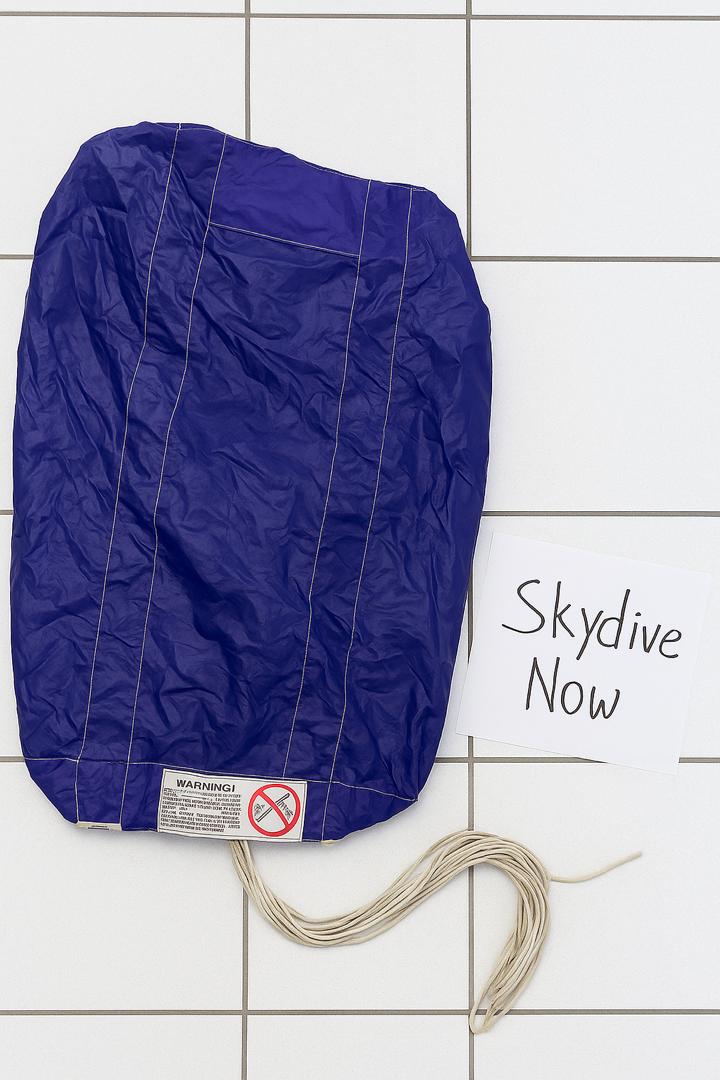


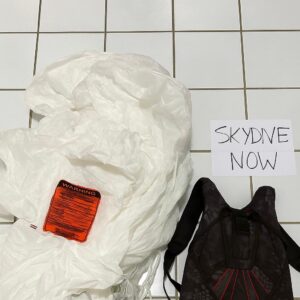
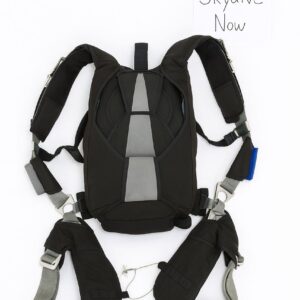
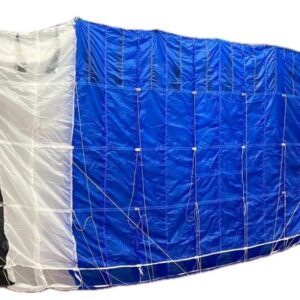

Reviews
There are no reviews yet.